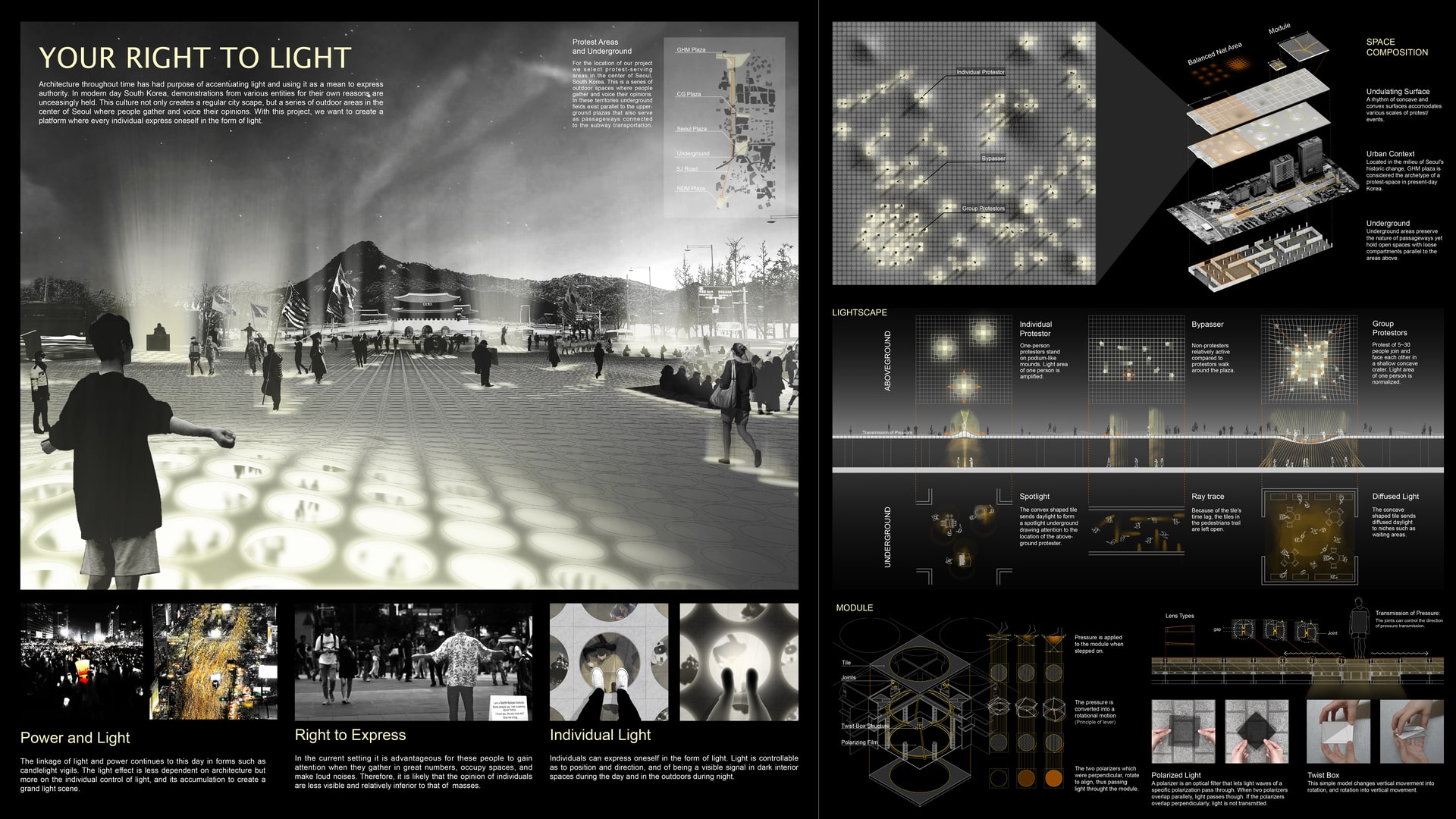Project Description
As seen with the Pantheon, numerous cathedrals, or the Nuremberg Hitler Stadium, architecture throughout time has had purpose of accentuating light and using it as a mean to express authority. This linkage of light and power continues to this day in forms such as candlelight vigils. However, modern day plazas diverge from their antecedents in that they are not exclusively designed to advocate a subject authority, but is acquired by the people as a backdrop and gathering area to express their opinion. At the same time, the light effect is less dependent on architecture but more on the individual control of light, and its accumulation to create a grand light scene. In modern day South Korea, demonstrations from various entities for their own reasons are unceasingly held. This culture not only creates a regular city-scape, but a series of outdoor areas in the center of Seoul where people gather and voice their opinions. In the current setting, it is advantageous for these people to gain attention when they gather in great numbers, occupy spaces, and make loud noises. However, because of these features, protests clash with non-protest activities and often invoke negative responses. With this project, we want to create a platform where every individual can express oneself in the form of light. Light has the advantages of being silent and controllable as to position and direction, and of being a visible signal in dark interior spaces during the day and in the outdoors during the night. Because we are dealing with areas in Seoul where underground areas exist parallel to the upper-ground plazas, it is possible to maximize light effect according to the time of day. We propose controllable tiles that incorporate polarizing film and twist box; a pressure-revolve mechanism that operates like a camera shutter. When stepped on, the two polarizing films rotate to align, becoming transparent, thus letting in daylight to the underground during the day and emitting artificial light from underground to the upper surface during the night. Tiles are connected with a linked joint so that area, degree and duration of light transmission is dependent on the activity of the person. Surrounding a stationary protestor, a gradient circle of light is formed, while along a walking person a trail of light is left. Combined with undulating surfaces, these light effects are more prominent. Three types of modules are presented; flat, convex and concave. Convex mounds create the effect of a spotlight which is effective in highlighting individuals. When one-person protestors go on these mounds which are 6m x 6m x 50cm (height), the elevation in height enables them more visible from the ground level, and the spotlight they create in the underground signals their presence. On the other hand, concave crater-like modules, 30m x 30m x 30cm, are more appropriate for group protestors in that they serve as gathering areas and create a large area of diffused light. We wanted to create different modes of light effect so that the intensity of manifestation is independent of the number of people. In other words, one-person protesters are visible in way from that is different from group protesters so their impact is not inferior. On this platform, Individuals gain autonomy of light and the light one creates is a manifestation of one's voice. Also the entry barrier to express oneself to the public is alleviated. Unlike previous forms of protest which require means of amplification and authorization, whoever wants to have a voice can simply stand on a tile to gain attention. As a whole, the agglomeration of activity, groups and voices manifest into a vibrant and diverse light-scape. With this proposal we want to give each person and the people a right to light.
